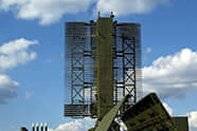Introduction
When talking about video compression protocols in the video surveillance industry, the discussion is usually between MJPEG, MPEG4, and H.264. The August 2009 Tech. Brief, Video Compression Standards – Pros & Cons, packages a summary of the discussion. JPEG2000 is a lesser talked about compression codec in the industry; yet, why do some cameras still support only the JPEG2000 compression codec when the advantages of H.264 are, seemingly, so clear-cut.
This brief compares the JPEG2000 and H.264 compression codecs and discusses the applicability of each compression standard in specific use-cases and hardware specifications.
JPEG2000 vs. H.264
JPEG2000 is a wavelet-based compression codec. It derives from JPEG, the still-picture algorithm, and like its predecessor is aimed at the compression of still images. However, it can also work on video sequences, and Motion JPEG2000 (MJ2 or MJP2) is a leading standard for digital cinema development.
Having been developed for a different application (digital cinema), the strengths of JPEG2000 are scalability – dynamic bandwidth; better error resilience; and content-based description and image security – copyright information, encryption.
From the perspective of the video surveillance industry, the main weakness of JPEG2000 is its lower compression efficiency: 10 – 12 Mbps for a D1 resolution image, using JPEG2000, as compared to 1.5 – 4 Mbps using H.264. This lower efficiency impacts bandwidth requirements (when transmitting images to a remote video recorder) and storage requirements (when recording the images).
From the perspective of the video surveillance industry, the scalability strength of the JPEG2000 codec allows a single stream of video to be simultaneously distributed to display monitors of different resolution, frame-rate, and quality: for example to a smartphone, an HDTV, and an NVR. In addition, better error resilience prevents the mosaic effect (blocks), and ensures that video quality far exceeds that of H.264 even under constrained bandwith conditions.
Horses for Courses
Given the above pros and cons, there are a set of use-cases where JPEG2000 scores over H.264, in the video surveillance industry. By examining the desired output from the following three parameters, a user can arrive at what these use-cases are.
Quality of captured image
In a study comparing the performance of JPEG2000 and H.264 coding, it has been found out that H.264 delivers better image quality in low-to-medium resolution sequences, while JPEG2000 delivers significantly better images in high-resolution sequences. For CIF and D1 images, H.264 H.264 performs better than JPEG2000; for 720p (1280 x 720) the performance is the same; while for 1080p (1920 x 1080) JPEG2000 has a clear advantage over H.264.
 |
 |
| Credit: http://www.ntic.com.tw | |
Storage Cost
Since JPEG2000 does not compress as well as H.264, it takes as much as five-to-seven times the storage space. This space problem can be addressed by recording at a lower bit-rate when there is no motion and increasing the bit-rate when motion is detected
Bandwidth availability
Once again, related to compression efficiency, if an image has to be sent at its full resolution, frame-rate, and quality, JPEG2000 is a bandwidth hog. Therefore, wired connections are a must, between the cameras and the video recorder. The scalability feature of JPEG2000 does allow a user to circumvent the bandwidth issue, but at the cost of image quality.
H.264 strikes backThe matter does not rest here though. Recognising the disadvantage of H.264 in coding high-resolution sequences, the standards body has recently finalised on some extensions to the original H.264 standard. The resulting codec, H.264 Fidelity Range Extensions (FRExt), also known as the High Profile [8], improves performance in high-resolution high bit-rate applications.So, if the captured image is of a high resolution (1080p or higher), image quality is paramount, and storage and bandwidth is not a constraint; JPEG2000 is the compression codec to go with. In the video surveillance market, the JPEG2000-only cameras are the higher resolution cameras (2 MP and higher), and these are significantly more expensive than cameras, of the same resolution, supporting H.264.
Conclusion
A user, depending on the requirements of a video surveillance operation, can opt for the more expensive JPEG2000 video surveillance cameras for extremely high resolution requirements (5 MP or above) for critical situations. In such a scenario storage and bandwidth limitations are not likely to be as onerous as in normal surveillance situations. If a user does decide on H.264 for high-resolution surveillance requirements, it may like to check if the cameras support H.264 High Profile [8].
Mistral offers a range of IP surveillance cameras and accessories, across a range of resolutions and features. Mistral IP video surveillance cameras support the H.264 codec, while third-party solutions available from Mistral offer JPEG2000 support too.



